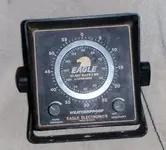charlie, all those things you list as examples, are functions of "faster and smaller". To which I would agree. This subject has come up before, where people draw analogies to advances in computers, cell-phones, etc.... to conclude: Thus detectors will someday be able to have x-ray vision, or coins (while disc'ing) go 2 ft. deep, and so forth.
But in the case of md'ing, the "faster and smaller" aspect is bumping into laws of physics on what the "smaller and faster" is doing. So unlike the leaps and bounds of evolution we saw in detectors from 1965 to 75, and then 75 to 85, and then 85 to 95, you'll notice that the current decade(s) that has slowed WAY down. You can have a 15 yr. old machine now (Exp, CZ6, etc...), and go up against the latest machines with negligable difference. Contrast to the earlier decades I cite, and notice that you'd have been a DINASOUR if your machine were a mere 5 yrs. old. Doh!

So it's not going to be a function of "smaller and faster" (like the evolutions in other arenas you cite) to bring x-ray or whatever. It's going to be an entirely new detector method. Sort of like TR to VLF type. Or VLF to pulse, etc.... Like prop planes versus jets - where there came a point where planes could simply go no faster with standard propellers. There's going to have to be something entirely new invented. Not just improvements of "faster and smaller" on what we already have.
If any of your examples were examples of entirely new (versus simply improved versions), then forgive me for missing it










